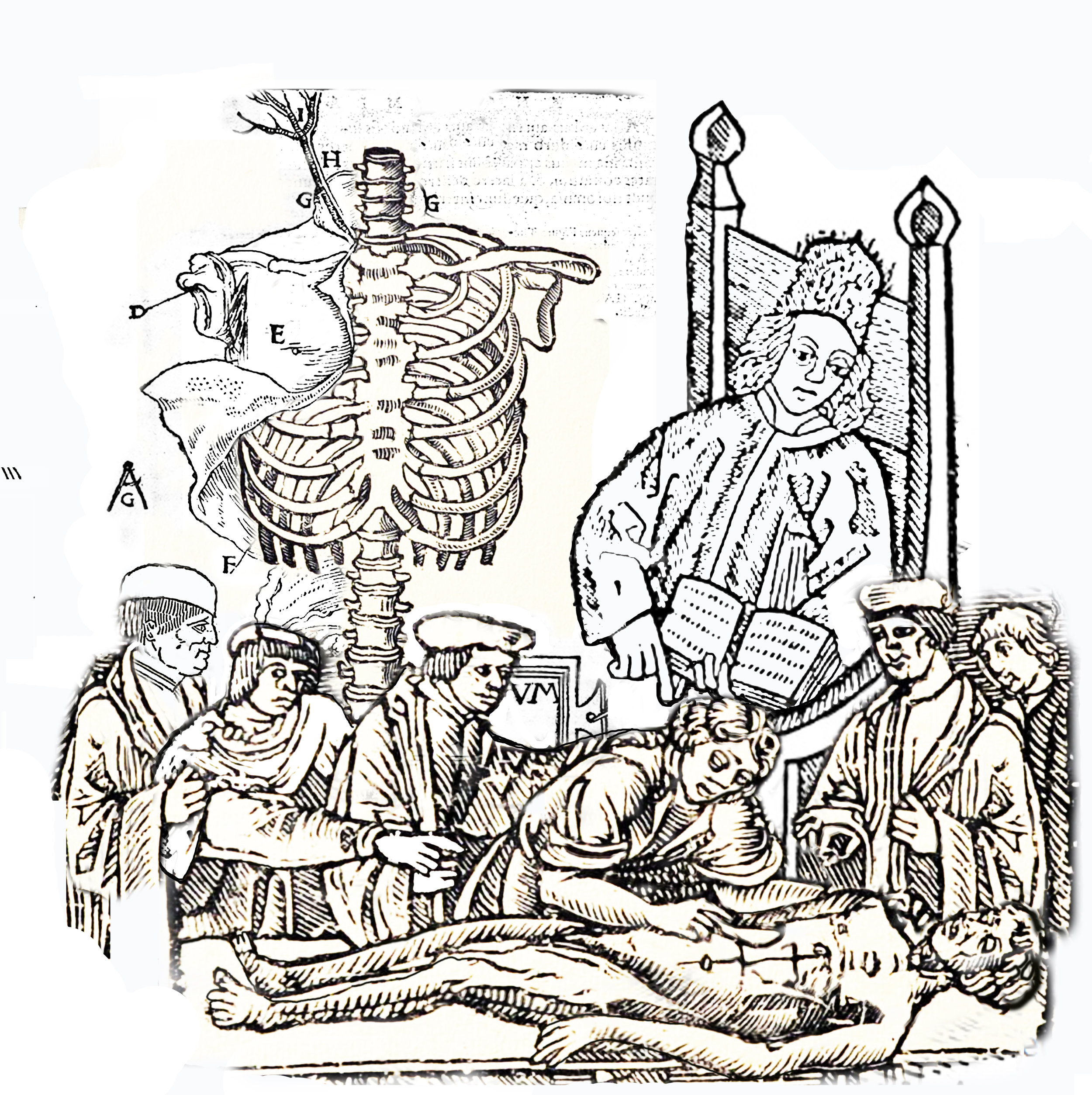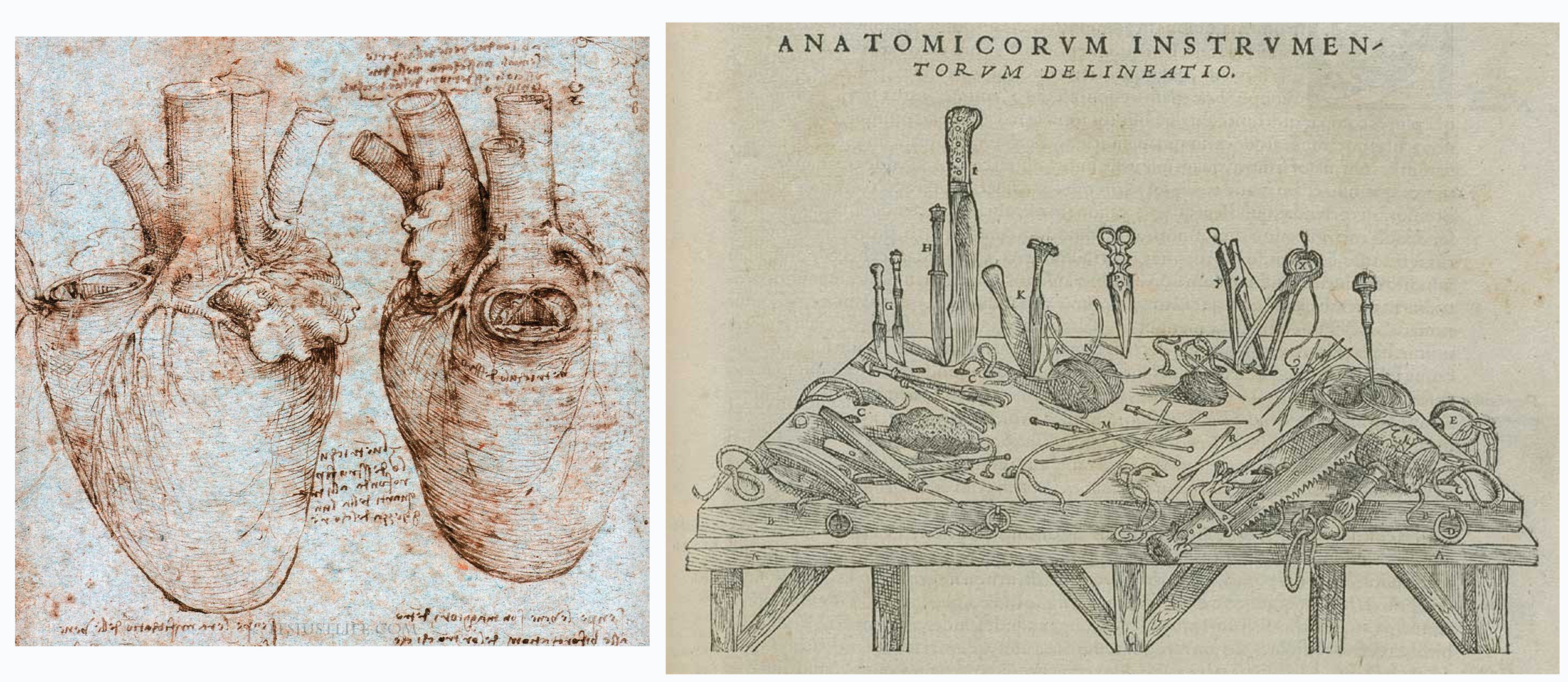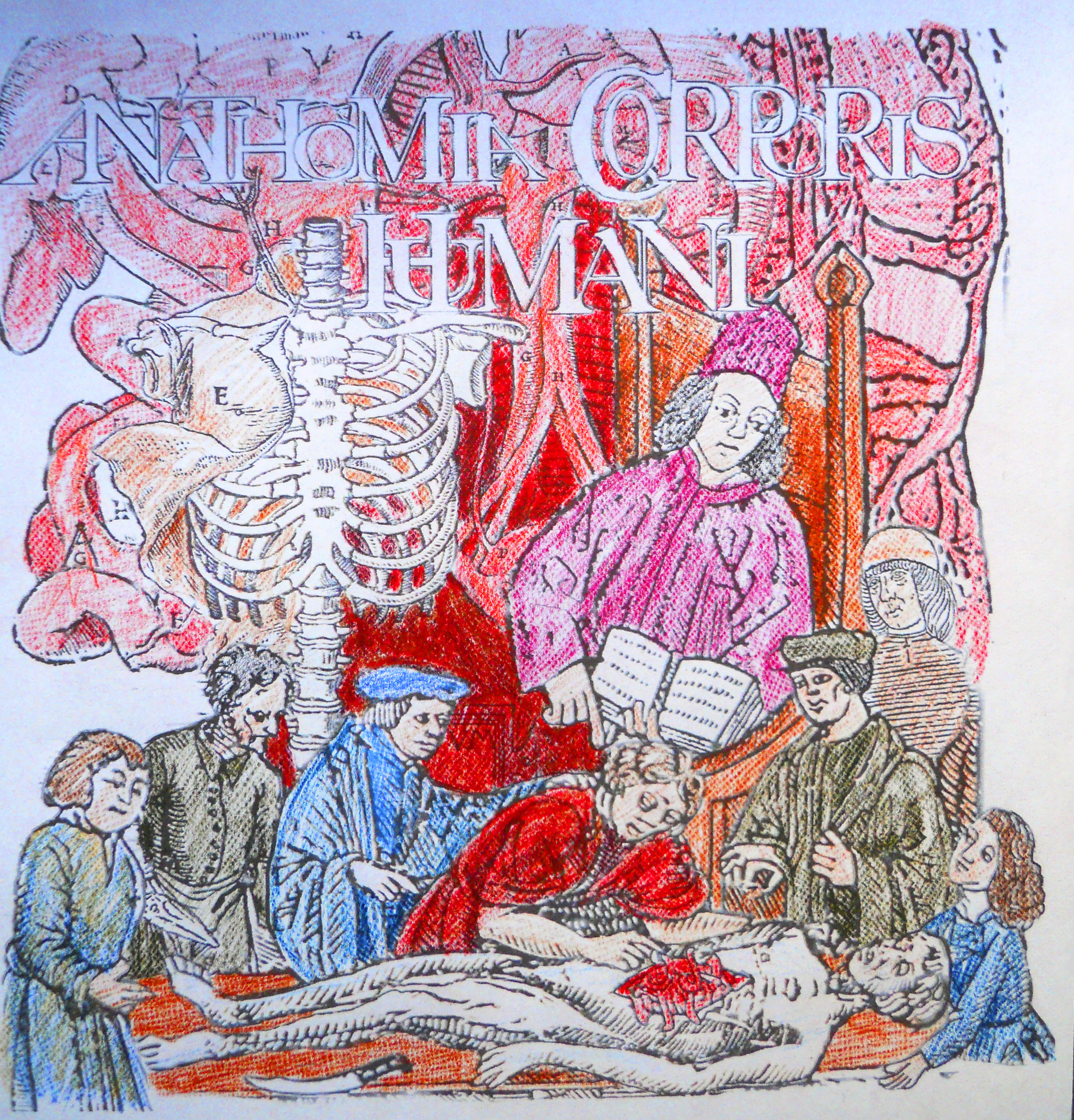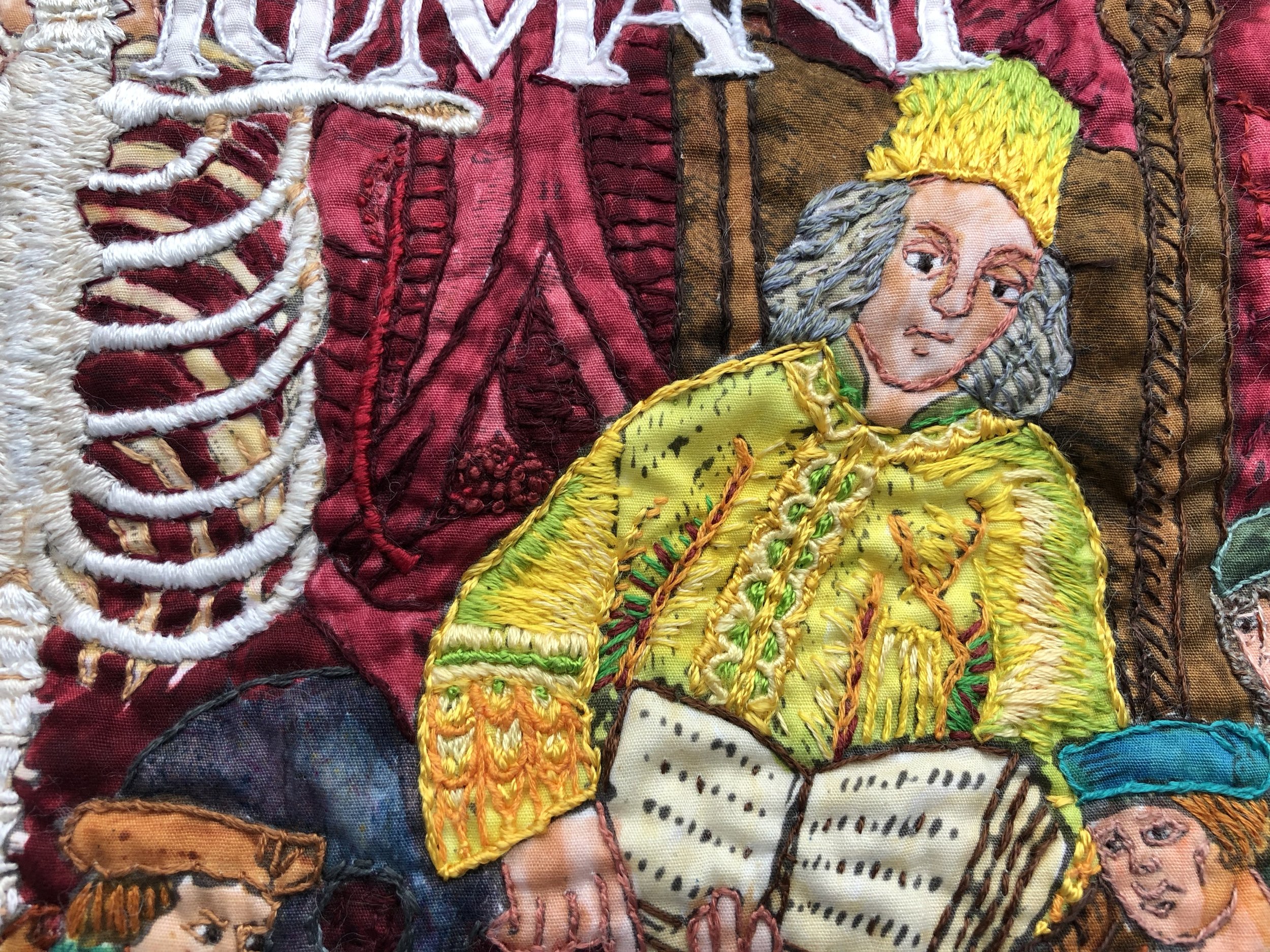For anatomy classes, the professor would sit in a large, ornate elevated chair, reading from an anatomical text, while a demonstrator actually performed the dissection.
So, he did dissections and wrote about them, which was a very big deal at the time.
Today, I can google ‘dissections’ and get a very detailed photo of the human body being opened and displayed. Before my husband had surgery, he was able to see a video of the procedure online! However, for most of history, dissections were forbidden, which made for some very inaccurate anatomical knowledge. The ancient Egyptians (who mummified bodies, which included opening and rummaging around inside) had a pretty good knowledge of anatomy. Some say when Alexander the Great ruled Egypt, around 330BCE, a change in attitude allowed two Greek scientists, Herophilus and Erasistratus, to do dissections. As a member of the well-known scholastic community in the newly founded city of Alexandria during the single, brief period in Greek medical history when the ban on human dissection was lifted.



















